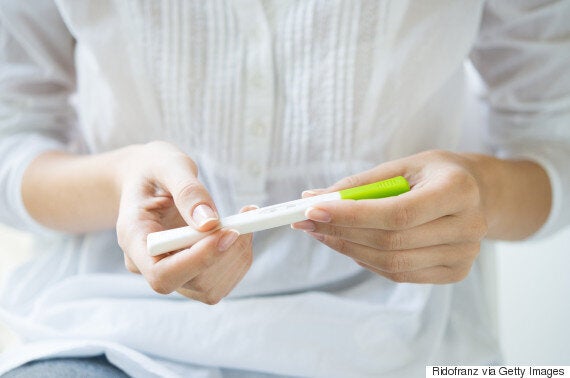As a fertility specialist, one of the most common sentiments I hear is, "I was careful my whole life not to get pregnant and now that I am ready, I can't believe it is this difficult!" Contrary to what your high school sex ed teacher would have had you believe, the chances of pregnancy with intercourse are not 100 per cent every month. The reality is, that even for healthy couples in their twenties, the pregnancy rate each month (a.k.a. cycle fecundability) maxes out around 30 per cent [1].
That is why infertility is defined as one year of unprotected intercourse without conception. After a year, 80-90 per cent of healthy couples will have conceived. Infertility affects one out of every six couples [2]. It is important to note that infertility does not require fastidious ovulation tracking, monthly ovulation predictor kits or daily basal body temperature charting with carefully timed intercourse. Many couples will choose to do these things to help better understand their cycles, but they are not a requirement. In general, we advise couples "just to keep trying on your own" if it has been less than a year. There are some scenarios, however, where early investigation is warranted.

Here are five situations where you should see a fertility doctor before one year of trying for pregnancy:
Age over 35
Age-related infertility is a growing trend. Changes in our society have encouraged more women to pursue higher education, job experience, travel or personal goals. At the same time, easy access to contraceptives has facilitated more control over when they choose to have children. The result is that women are trying for their first child much later in life.
A woman is born with all of the eggs she will ever have, and throughout life they decrease in both quantity and quality. Delaying pregnancy until after 35 can make it more difficult to become pregnant and more than double the risk of miscarriage. (Over 40, the risk triples). Women over 35 are therefore advised to see a fertility doctor after six months of trying and women over 40 are advised to seek medical advice right from the start [3]. In these later reproductive years, time is precious! A fertility doctor can help make the most of it.
Male factor
Male factor infertility is the single most common cause of infertility [2]. A common misconception is that because men make new sperm every three months, it must be working. While it is true that sperm is not susceptible to the same age-related decline as eggs, there are a lot of factors to consider. A basic sperm test will evaluate the count (concentration), movement (motility) and shape (morphology) of the sperm. Many men can have abnormalities in their sperm without any other health problems. Red flags that a man may be at particular risk for infertility include testicular trauma or surgery, undescended testicles, erectile dysfunction, anabolic steroid use (specifically testosterone) or exposure to radiation.
Irregular periods
The surest sign of ovulation each month is a regular menstrual cycle. That means having a period every 21 to 35 days with minimal or no spotting in between. When the ovaries are not producing an egg every month, the shedding of the uterine lining (endometrium) becomes unpredictable. This makes getting pregnant particularly difficult because an egg is not being released, and when it is, timing intercourse around ovulation can be very tricky. Polycystic ovary syndrome (PCOS) is one of the most common causes. Women with PCOS have cycles that are longer than 35 days sometimes combined with acne, weight gain and excess facial hair. If periods are regular but spotting occurs in between, then a gynecologist should check for abnormal uterine growths like fibroids, polyps or abnormal cells in the cervix.

Tubal blockage
The fallopian tubes are essential for getting pregnant naturally. They have tiny projections at each end, like fingers, that are responsible for picking up the egg after it is released from the ovary. Sperm swim from the vagina, through the cervix, and all the way through the uterus to meet the egg inside the fallopian tube. Fertilization (the meeting of egg and sperm) occurs in tube and the resulting embryo actually lives in the tube for the first five days of its life. Eventually, the embryo is transported along the tube and into the uterus where it implants to begin growing a pregnancy.
Infections such as chlamydia, gonorrhea or appendicitis (even if they happened many years ago) can cause scarring of the tubes, impairing their function. Endometriosis (a disorder where the uterine lining grows outside of the uterus) can also lead to scarring and deformation of the ovaries and tubes. You can check whether the fallopian tubes are open by having an x-ray test called a hysterosalpingogram (HSG). If the tubes are blocked, then surgery or in vitro fertilization (IVF) may be required to get pregnant.
Same-sex couples or singles
Women and men in same-sex relationships, or singles, who wish to become parents have the option of using donor sperm or donor eggs. For women, donor sperm can be obtained from a commercial sperm bank (a.k.a. anonymous donor) or from an altruistic friend (a.k.a. known donor). It can then be used to try for pregnancy by intrauterine insemination (IUI), which is the most natural way, or in conjunction with IVF. Men using an egg donor must also find a woman willing to carry the pregnancy. All of these treatments are termed "third-party reproduction" and they can be coordinated by a fertility clinic.
References:
[1].Practice Committee of the American Society for Reproductive Medicine in collaboration with the Society for Reproductive Endocrinology and Infertility. Optimizing natural fertility: a committee opinion. Fertility and Sterility. 2017;107(1):52-58. doi:10.1016/j.fertnstert.2016.09.029.
[2].Fritz MA, Speroff L. Clinical Gynecologic Endocrinology and Infertility. 8 ed. Philedelphia: Lippincott Williams & Wilkins; 2011.
[3].American College of Obstetricians and Gynecologists Committee on Gynecologic Practice and Practice Committee. Female age-related fertility decline. Committee Opinion No. 589. Fertility and Sterility. 2014;101(3):633-634. doi:10.1016/j.fertnstert.2013.12.032.
Follow HuffPost Canada Blogs on Facebook
Also on HuffPost: